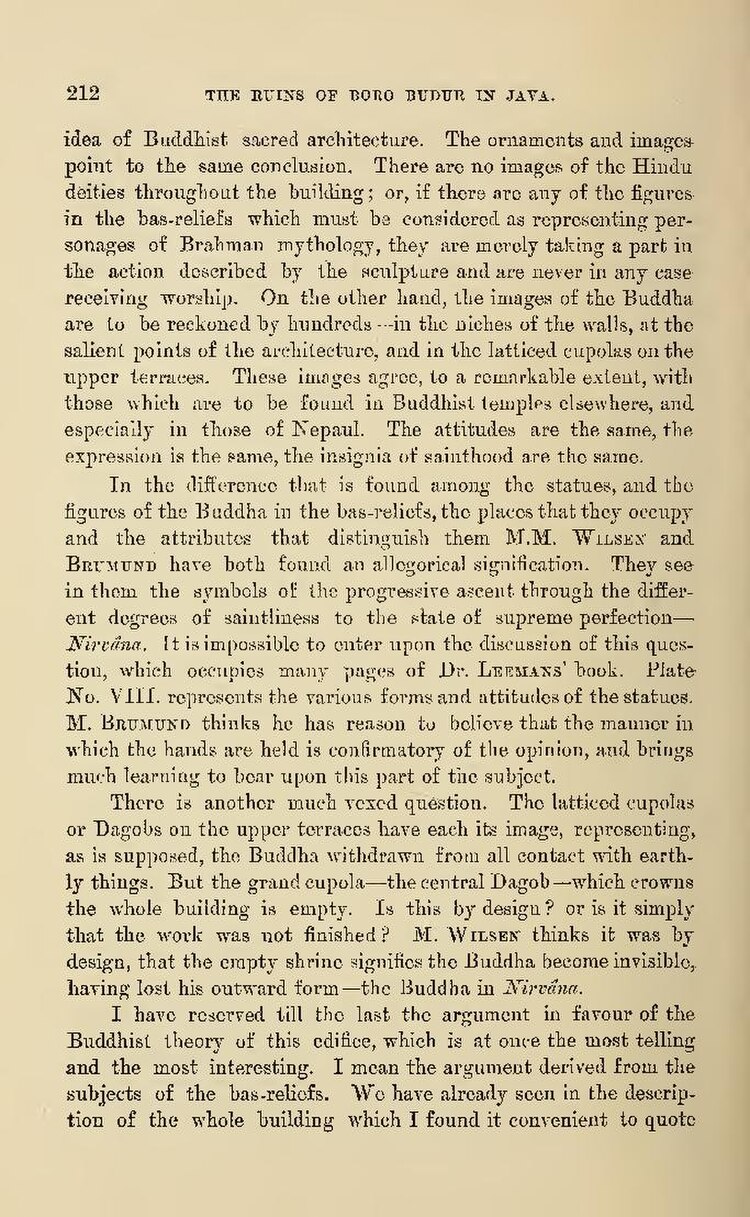idea of Buddhist sacred architecture. The ornaments and images point to the same conclusion. There are no images of the Hindu deities throughout the building; or, if there are any of the figures in the bas-reliefs which must be considered as representing personages of Brahman mythology, they are merely taking a part in the action described by the sculpture and are never in any case receiving worship. On the other hand, the images of the Buddha are to be reckoned by hundreds in the piches of the walls, at the salient points of the architecture, and in the latticed cupolas on the upper terraces. These images agree, to a remarkable extent, with those which are to be found in Buddhist temples elsewhere, and especially in those of Nepaul. The attitudes are the same, the expression is the same, the insignia of sainthood are the same.
In the difference that is found among the statues, and the figures of the Buddha in the bas-reliefs, the places that they occupy and the attributes that distinguish them M.M. WILSEN and BRUMUND have both found an allegorical signification. They see in them the symbols of the progressive ascent through the different degrees of saintliness to the state of supreme perfection— Nirvâna. It is impossible to enter upon the discussion of this question, which occupies many pages of Dr. LEEMANS' book. Plate No. VIII. represents the various forms and attitudes of the statues. M. BRUMUND thinks he has reason to believe that the manner in which the hands are held is confirmatory of the opinion, and brings much learning to bear upon this part of the subject.
There is another much vexed question. The latticed cupolas or Dagobs on the upper terraces have each its image, representing, as is supposed, the Buddha withdrawn from all contact with earth- ly things. But the grand cupola—the central Dagob—which crowns the whole building is empty. Is this by design? or is it simply that the work was not finished? M. WILSEN thinks it was by design, that the empty shrine significs the Buddha become invisible, having lost his outward form—the Buddha in Nirvâna.
I have reserved till the last the argument in favour of the Buddhist theory of this edifice, which is at once the most telling and the most interesting. I mean the argument derived from the subjects of the bas-reliefs. We have already seen in the description of the whole building which I found it convenient to quote
